I didn’t start running until my forties. I could never see myself as one of those cringing, tense joggers frowning their awful, sad, tight runner’s frowns—the faces I would laugh at as I rolled by on my skateboard when I was just thirteen, thinking I’ll never be that guy, with my wheels going click-click—clack-clack over the cracks between the concrete sidewalk squares along the streets of San Francisco. I didn’t start until I was living in Potrero Hill with the second woman I proposed to and didn’t marry; she was a runner and helped to get me out the door for my first heaves around the neighborhood. As much as I dreaded the next mile, I could feel something coming alive, step by step—something building up in my legs and my chest that felt better than when I didn’t move.
I didn’t start thinking about running more until I ran across a copy of Born to Run on that boat trip in Chile. Chris McDougall’s great book helped me to understand how as humans, we are uniquely evolved to run, and that the idea that I’d held on to, that I wasn’t the ’running type,’ was just another way of avoiding doing what other people do, of giving myself a way to feel different—and a reason not to do anything.
Growing up the in the city, it’s no surprise that trail running didn’t really occur to me, and running on sidewalks and roads still holds no appeal, so I didn’t really start running regularly, or any distance, until I moved from the city across the Golden Gate bridge to Sausalito, where I could be closer to the trails in the headlands and on Mt. Tam.
It took me forty years to remember how much I love to run—and also to rediscover how my mind and body respond naturally to the terrain. Point me down a paved road and my legs will barely move, but the narrower the trail gets, the more I feel pulled ahead—and when faced with a stretch of winding singletrack, my eyes open, my feet get lighter, and I’m drawn forwards as if by a tractor beam, ready to race ahead, chasing the next patch of sun where it finds its way down through the trees to the fiddleheads, wild nettle and Indian paintbrush along the path.
I never became anything like a distance runner, not even really a serious runner, let alone a marathoner or an ultra guy, but by 2016 I’d gotten to the point beyond could, to where I was running six, seven and eight mile trail runs two or three times a week. I’m not claiming that running a few miles is anything exceptional, but I was really digging it, and it was making a difference.
Still, I wasn’t going out of my way to make things difficult for myself. Runners who claim to like hills must suffer from a lack of trauma. Not me—my favorite type of uphill is a gradual, rolling descent that lets me open up and really fly—and don’t have any problem knowing that I’m getting a little gravity assist. As a lifelong lover of maps, I use all the tools I can to find and design ideal running routes wherever I am, even right here at home. The loop that I ran most often in those years is a perfect seven in China Camp State Park that starts with an easy rolling two to warm up, then climbs steeply for a mile or so before offering a hero’s return for four miles of just-barely-downhill trail that winds through redwood, oak, and madrone forest along a ridge with views of San Pablo Bay.
I’d always thought of myself as an outdoorsperson, and largely thanks to my parents, I’d already become a competent sailor, skier, skateboarder, climber, and backpacker by the time I was in my teens. In my twenties I snowboarded, rode motorcycles and mountain bikes, and did a fair bit of windsurfing before I injured my back. In my thirties I climbed a lot indoors in the gym, did a bit of road cycling and even tried whitewater kayaking before beginning to get heavily into kitesurfing. In my forties, I also took up paragliding, and my passion for wind sports and flying took me all over the world, and even to become an adventure guide in and semi-pro athlete in Brazil.
I love all of those sports, and probably almost all of the others that I haven’t tried—and, all of them are all more complicated than running. As I learned when I did finally become a just-about-average and very middle-aged trail runner, running is the simplest and most effective dynamic, aerobic outdoor sport, and regardless of how much I love to do all sorts of other things—and all the complicated, colorful, and expensive gear involved—running delivers the biggest bang for my buck. All I need are a pair of shoes, shorts and a tee shirt, and I’m good, and the result can be just as meaningful, and even as dramatic, as what comes from sports that involve far more preparation, equipment—and risk.
One day that spring—the year after I’d sold my business—I was out on that same loop in China Camp that I’d returned to so many times. I’d already made the climb up from the lower section, and I was cruising back along one of my favorite parts of the trail higher up, feeling the ease, and fluidity—and power—that comes with moving fast in the outdoors.
The trail there is about two feet wide, just a little more than true singletrack, but still narrow enough that two runners coming from opposite directions have to step aside to let each other by. It was a perfect day for running; low sixties, clear, with a light breeze. The landscape had begun to dry out from one of our short California winters, but it was still early enough in the year that things hadn’t yet all gone to sun-baked dust.
My whole body felt light, and picking my way between rocks, roots, dips, and bumps of the trail felt more like floating—or flying. I was in good form, and proud of myself for being able to run like that at forty-six—at any age really, but especially since I hadn’t done much in the way of real exercise as a younger man.
I’d known that moving well feels good—really, really good—and I had experienced that quite a lot with all of the board- and wind-sports, climbing and hiking that I’d done, but it’s also true that I’d avoided things that felt hard. Running is simple and easy, but also nearly the most difficult in terms of how much energy it requires for a given distance, exceeded only by swimming. I’d been doing a lot of more complicated sports all my life that didn’t ask as much of my body in this very basic way, but I’d finally come around to the simple joy and pleasure of running—even if it is still hard to do.
Cruising along there, wide-eyed and exuberant, just enjoying myself in the outdoors, the sun filtered green and gold through the purple-skinned madrones as I rounded a bend to the right, a wide, shallow reach of water visible between the trees as the trail bent around the crown of a ridge before dipping back towards the shade. Having regained my wind after the steep climb, I was running well, head lifted, back straight, abs tight, breathing through my nose, my quads churning as I focused on the smaller muscles around my knees and ankles to keep the joints stable.
Just then, in the very next moment, as my feet continued to find their own way along, I found myself aware of my entire body as if from a short distance away, observing myself in slow motion. I watched myself move like water, each foot landing just where it needed to go—moving without conscious thought, but also not without thought at all.
Still as if from a point about six feet above and to the right, my mind’s eye snapped a single still frame as I was suspended in mid-stride, both feet in the air, my eyes forwards toward the stand of small redwoods in the next bend—and along with that freeze-frame image, a clear message appeared: “If my body can do that, then I can do that.”
My heart caught in my chest, and I pulled up right there in the middle of the trail. Tears streamed down my face as I heaved deep breaths of oxygenated air. After a minute of just breathing, I wiped away the tears and sweat, and my vision became crystalline-clear as I looked out across the water at the hills that framed the foot of the Napa Valley. It was precisely then that I realized how this thing often called “intuition” really works, at least for me—because that’s what I was doing as I moved along the trail. I was moving with awareness, but without thinking. I’d gotten a glimpse of myself responding to the terrain, not instinctively—intuitively. I could interject with conscious action as necessary, but for the most part there was no need to decide anything—certainly not the precise location of each footstep, which would of course be impossible anyhow, because the feet have already moved by the time the brain has registered the question of where to put them next.
For much of my life, when I went looking where I thought I’d find me, what I found instead was a hole that wouldn’t ever heal. I’d spent a lot of my twenties and thirties wondering not just “who am I?” but also “how could I not know?”—leaving me feeling like I’d missed out on what Ram Dass calls “somebody training.”It may well be that this was yet another rediscovery of the obvious, but as Maggie Nelson writes in On Freedom, there is a “fertile kinship between freedom and anxiety,” and, just as she did, “I had to learn it anew myself.”
As I leaned against an old wooden fence and took in a few more lungfuls of air, my heart rate moderating, I felt an electric wave of relief and elation surge through my entire body. I saw that just as I had come to trust my body to move down the trail without thinking about every single step, I could trust my self to just move more, in life. I saw how intuition could work for me, in my body. The old saying tells us to “trust your gut”—but that never really worked for me. It wasn’t in my gut—it was in my legs.
Running is an elemental practice in listening to where the body wants to go. We were all born to run, and when we do, the body has the chance to get out ahead of the conscious mind. We can’t think as fast as our feet, and so we get to watch and see where the body takes us. There’s a word for all of the low-level physical sensations of the inside of our bodies, the sore-stretch feeling of strength in the muscles, heavy-scratchy tiredness behind the eyes, the grey ache of the heart, the twisting pang of something not quite right in the belly. These are all forms of interoception—the “awareness of the inner state of our body”, and they all form the underlying foundation for what lies above, which is intuition—the result of our unconscious taking in the sensations in the body and, still without our conscious involvement, directing movement—which could be of body or mind—in response to that information.
Consciousness is not just a sport of the mind—full consciousness is a bodily function, and, as I’ve often heard said, the body is our “vehicle for the soul.” Even with all the time I’d spent prior to that day in so many different physical activities, I hadn’t made the connection between physical movement and having my full capacity available to navigate my own life with something other than agonizingly conscious decisions to guide me. After all that struggling with not knowing, here was the beginning of a real relationship with something that spoke clearly—and that gave direction—from a place that actually felt like it was part of me—inside. While it’s often said that insight arrives in moments of stillness, for me it happens much more often in moments of motion. I hadn’t thought much about “intuition” as this sort of inner voice at that point—other than in feeling that it was missing—but I’ve since come to see that intuition lies at the intersection of physical and psychological movement, and that it’s movement more than the awe at nature’s great temples that provokes the actual working and available aliveness of the senses. Surely, John Muir found inspiration in the scale and grandeur of Yosemite, just as Jacques Cousteau did in the depths, and Shackleton did in Antarctica, but my great appreciation for the infinite glory of the physical world, within and without, came along by way of a just-more-than-ordinary trail in suburban in Marin County, California.
That was where the alchemy happened, the transformation, the evolution from “fuck everything” to I’m in love with everything began. That is where I made the concrete connection between what had been an abstract idea of knowing myself and what seemed like a childish fantasy of “just” trusting that things would go well, and having a real sense of how to find my way—and my feet on the ground actually finding my way. In the middle lies the reality that just as the body with its senses will find its way to a good place, and in a good way—also, the mind, in our deep psyche, and in our emotional self, will tend towards finding a good way, a way of balance and trust and of truth, if we are taught and if we learn how to do so. We are not born with this ability fully intact. It must be nurtured, brought to light, and practiced. Otherwise, we will tend as I did towards confusion and bleak horizons, towards losing ourselves.
I straightened up, stretching my back and chest and legs and arms, feeling awake and alive, ready to move, and I remembered being in the woods back in Maine as a child. Little-boy me, jumping over fallen logs, dodging dangling ferns and buzzing bees, my small feet landing on rotting mushrooms and soft patches of bright-green moss, springing me back into the air, pushing me forward.
That child inside wakes up on trails like this. Another pulse of current jolted through my body, an awakening—of the child inside me, and also of my own full-grown self, an adult man, one and the same, reunited—and then I was gone like lightning, breathing hard, running free, flying through the trees.
Thanks for reading, and for being part of this journey.
This is part of AN ORDINARY DISASTER, one man's proof that despite what may seem like our inability to hear it, and all of our attempts to avoid it, we can all learn to listen to ourselves, and to act upon the inner voice of our self, our sanity and our soul.
Further reading
Born to Run by ‘barefoot runner’ Christopher McDougall
Run or Die by ultra- and sky-runner Kilian Jornet
Running Man by ultra-ultra-runner Charlie Engle
On Freedom: Four Songs of Care and Constraint by Maggie Nelson
What I Talk About When I Talk About Running by Haruki Murakami
The Extended Mind: The Power of Thinking Outside the Brain by Annie Murphy Paul
Polishing the Mirror: How to Live from Your Spiritual Heart by Ram Dass, as well as this video: Sacred in the Everyday.
The film Running The Sahara, about Charlie’s epic mega-run across the Sahara
My athlete profile on Strava
Here’s the table on contents for my memoir in progress. You might also enjoy some of my other writing on subjects mentioned here, such as:
The amateur athlete’s speedball
When I was growing up, Ocean Beach wore a permanent shroud of blowing grey fog. I only remember going there at night to crouch around a fire of splintered pallets and pull off a bottle of Old Crow—never in the daytime. There’s way less fog these days, and the sun is no longer a stranger to the fa…
How physical fitness supports my creativity and my work as a writer
Just a couple of months ago, I wrote about a horrible attack of a sciatica that laid me out for two weeks straight and reminded me how devastating it is to be even partially physically debilitated. That episode had its roots in an injury that I sustained more than 20 years ago, the reason for which I knew just as well then as I do now: a lack of enough …
or any of the other essays that you can find here:
Eighteen essays about addiction, masculinity, creativity, and intuition
I recently divided my stack into sections—memoir, essays, mediations, and perhaps soon more—and in doing so I was reminded that I’ve put out no fewer than eighteen long form essays so far here, on topics ranging across anxiety, fitness, creativity, sobriety, self-discipline, purpose, love, adventure, sciatica, pain, AI, intuition, the collective unconsc…
I’ve got some questions for you
Are you a runner? How has the physical activity of running affected you, psychologically and emotionally?
What’s your own relationship with intuition and how has that changed over time?
What is your sense of self based on? Where does it live within you?
Where’s your favorite place to run?
Please share, comment, restack, recommend, and click the little ♡ heart right there 👇🏻 if you dig this piece. I’d love to hear from you!

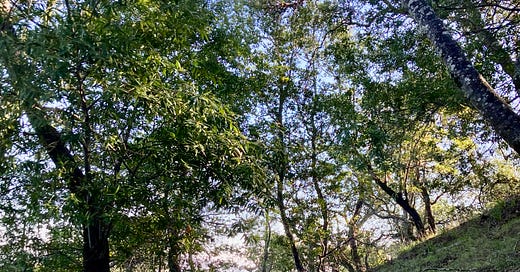


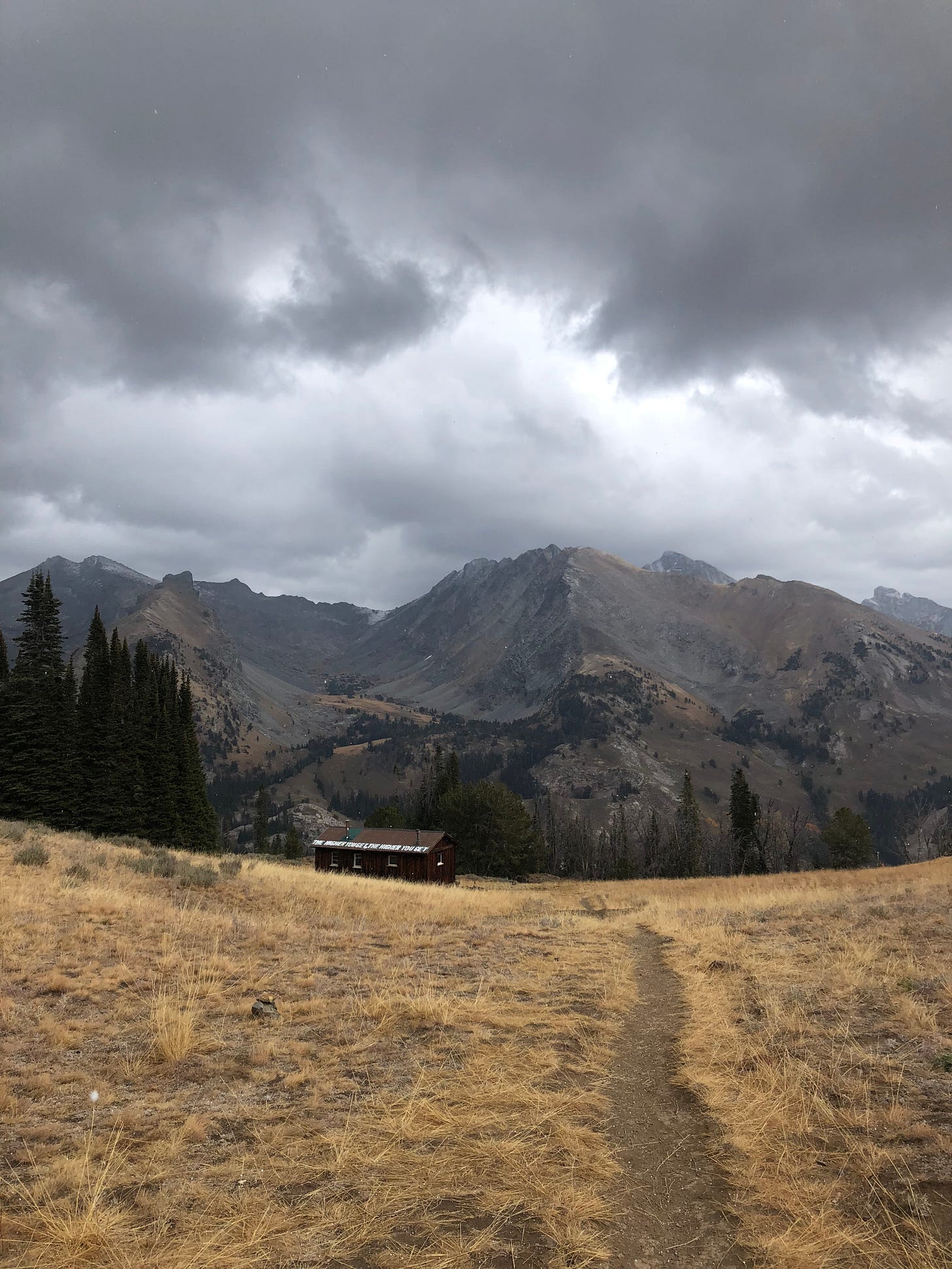
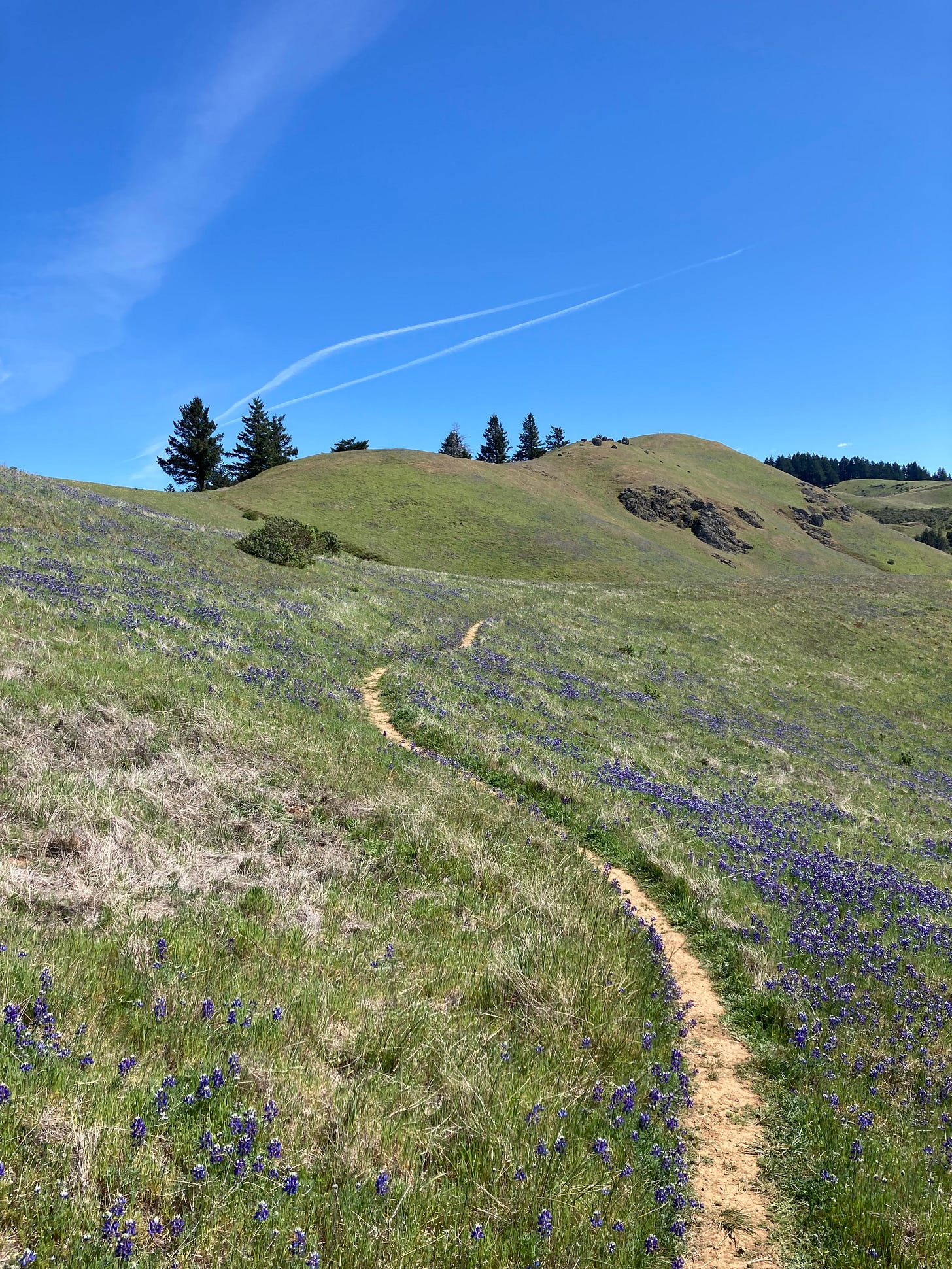
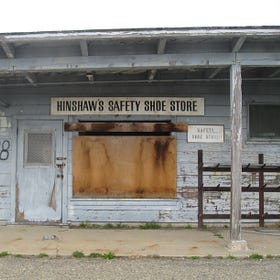
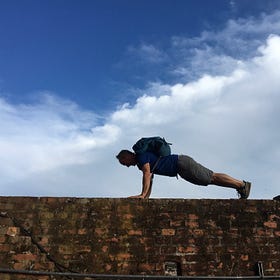
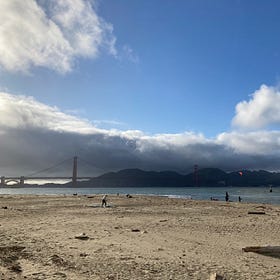
Really enjoyed this. Almost makes me want to put on some shoes and go for a run. Almost.
Love this, Bowen. Running has been a mainstay for me -- mental hygiene. It's a way to know a place, to carve out your own sense memory of belonging. And running with others has much in common with what neuroscientists call "spiritual synchrony" (the increased likelihood of epiphany or transport when two or more people participate in religious rituals).